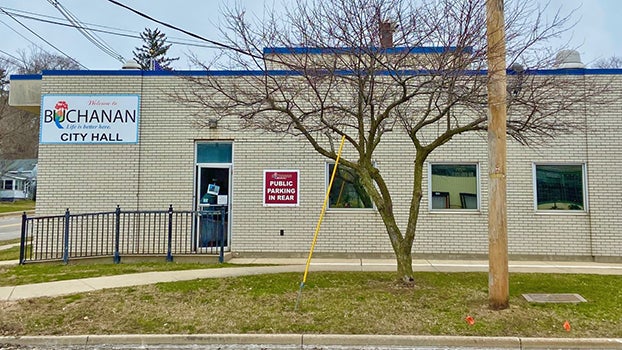Pokagon Band to begin work on river restoration
Published 9:56 am Tuesday, December 4, 2018
DOWAGIAC — Though the snowy fall of winter will soon be over Dowagiac, the Pokagon Band of Potawatomi Indians is already looking toward the warm spring months, as it will mean moving forward on a project nearly a decade in the making.
After years of planning and laying groundwork, the Pokagon Band is preparing to take the next steps in its restoration project of the Dowagiac River on tribal property. In spring 2019, the tribe will be looking to put out bids to remeander parts of the Dowagiac River, which will redirect the river’s watercourse by placing the river back into some of its original curves and bends that existed prior to when it was dredged in 1913.
Jennifer Kanine, director of the Pokagon Band Department of Natural Resources, said the project will improve water quality, provide a diversified ecosystem and expand habitats for local wildlife.
 “The thought was that remeandering the river would provide a more intact ecological system, versus the currently straight and dredged Dowagiac River,” Kanine said. “Right now, the river is straightened, it’s dredged, it’s got deep banks, it’s disconnected from its flood plain. It’s a very flashy system when it rains, so by putting the river back into its meander bends, what you are doing is reconnecting it to its flood plains. You are slowing down that water, and you are helping filter that water that comes through that area.”
“The thought was that remeandering the river would provide a more intact ecological system, versus the currently straight and dredged Dowagiac River,” Kanine said. “Right now, the river is straightened, it’s dredged, it’s got deep banks, it’s disconnected from its flood plain. It’s a very flashy system when it rains, so by putting the river back into its meander bends, what you are doing is reconnecting it to its flood plains. You are slowing down that water, and you are helping filter that water that comes through that area.”
Since the project began in 2011, the Pokagon Band has conducted feasibility studies and environmental assessment reports to ensure the project would be possible and beneficial to the area. Most recently, the Pokagon Band did surveys of plant and wildlife in the area to determine how they would be affected by the project, which Kanine said has shown that remeandering the river would provide water animals with additional environments.
“With the restoration of the meanders, we are actually creating a lot more ecological niches than what there are currently,” Kanine said. “We are hoping overall that by reconnecting the river to its flood plains and creating different types of wetlands, we can benefit all the turtle species we have here, as well as some of the snake and salamander species and some of the small mammal species by having different habitats for them to live in.”
Though the project is set to begin in 2019, the project will be long term, as it was initially proposed to cost upwards of $5 million, Kanine said. Depending on grant funding, Kanine said the project could take 10 to 15 years to complete.
“We are going to start in small segments, and as we start to put the river back into its bends, we can seek more grant funding and show that we are moving forward in the project,” she said. “We are hoping to [put the project] out for bid by early spring 2019, and by this time next year, we can have someone out there beginning to dig our first meander bend.”
After years of preparation, Kanine said she is excited to begin construction on the project in the coming year.
“This is still a big project, so it’s a little nerve wracking, but I’m a long-term thinker. I can see what [the river] can be,” she said. “We have the technology and the experts working with us to make this a better ecosystem overall. I think it’s pretty awesome. … This project is going to affect generations down the line, so that they can see a river that, even if it is just a small portion of the river, is in its natural state and is connected to its flood plains as close as it can be to [1913], when it was dredged.”






